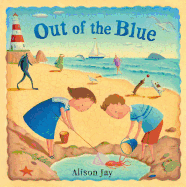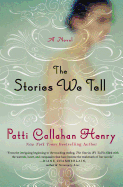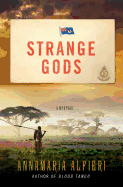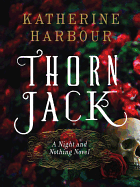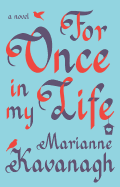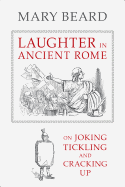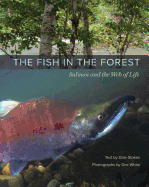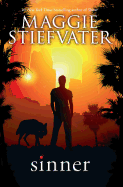Tuesday, July 1, 2014
Recently we've seen a number of books about Abigail Adams and contemporaneous women, along with fiction about Union women in the Civil War: I Shall Be Near to You and the upcoming Neverhome. With the Fourth of July imminent, we spoke with Diana Jacobs, author of Dear Abigail: The Intimate Lives and Revolutionary Ideas of Abigail Adams and Her Remarkable Sisters, about the current interest in Revolutionary and other historical women: "For so long women have been excluded from depictions of the 18th and 19th centuries because they didn't play leadership roles or fight battles, or even vote," Jacobs said. "Now, as we look for fresh ways to see the past, we see women as an untapped resource."
 Jacobs was interested in Abigail's two sisters, Mary Cranch ("the good girl to Abigail's rebel, who grew up to be an immensely capable and shrewd administrator") and Elizabeth Shaw Peabody ("the most literary of the three sisters and the most competitive with Abigail"). After quite a bit of research, she amassed a "trove of witty, politically savvy, gossipy, incisive, heart-breaking letters" they wrote to each other, their husbands and children throughout the years. "Abigail's sisters were without doubt her intellectual equals. But because they didn't marry John Adams, their correspondence was harder to find."
Jacobs was interested in Abigail's two sisters, Mary Cranch ("the good girl to Abigail's rebel, who grew up to be an immensely capable and shrewd administrator") and Elizabeth Shaw Peabody ("the most literary of the three sisters and the most competitive with Abigail"). After quite a bit of research, she amassed a "trove of witty, politically savvy, gossipy, incisive, heart-breaking letters" they wrote to each other, their husbands and children throughout the years. "Abigail's sisters were without doubt her intellectual equals. But because they didn't marry John Adams, their correspondence was harder to find."
Women like Abigail Adams educated the children and ran the family farms or businesses in their husbands' absence. In the spring and summer of 1776, "In Philadelphia, John was leading the radical front (against the moderate John Dickinson of Philadelphia) determined to break permanently from Great Britain. In Boston, Abigail and her sisters had made an equally radical decision to inoculate their families against smallpox. Because inoculation could only work by producing a (hopefully mild) form of the lethal virus, they were well aware that they risked death for two generations of patriots as the Declaration of Independence was being conceived. All very dramatic. I loved writing about it," Jacobs said.
Dear Abigail is a captivating biography of three remarkable women--a good bet for celebrating the Fourth and summer reading. --Marilyn Dahl, editor, Shelf Awareness for Readers
Waiting for the Electricity
by Christina Nichol
Resourceful and optimistic, Slims Achmed Makashvili is everything a man in the Republic of Georgia is supposed to be. And everyone knows that Georgia is the finest country in the world. So why has it been months since Slims received a paycheck at his job? Why did he let the woman he was supposed to marry get away? Why won't the lights turn on when he flips the switch? Fearless and undaunted, Slims does the only reasonable thing he can think of to help his country: he writes to Hillary Clinton. Winning sponsorship from her small business internship program would allow Slims to import the American dream to Georgia. He could start a Black Sea Spiny Dogfish packaging plant, or maybe a Georgian sheep cheese business. Then again, if Hillary can't help him, he could always just kidnap a British oil pipeline specialist.
Christina Nichol reins in her deliciously wild debut novel by creating unusual and fleshed-out characters who carry the weight of the fraught reality they inhabit. She balances the dry wit of preposterous folk wisdom ("Show me a man with his feet planted firmly on the ground, and I will show you a man who can't put on his trousers") with sensitive insight into the political realities of post-Soviet Georgia. In Nichol's able hands, Slims is a wise, philosophical hero attuned to the ambiguous nature of progress--for nations as well as individuals. "The problem is the word love," he tells us, "which sometimes means something stupid, and sometimes means the purpose of life." --Casey O'Neil, bookseller, Elliott Bay Book Company
Discover: Surprising successes spring out of a country proudly poised on the brink of chaos.
What Is Visible
by Kimberly Elkins
What Is Visible is the fictionalized story of Laura Bridgman, a real-life deaf and blind woman whose successful education inspired Helen Keller's parents to seek the same for their daughter. Laura's limitations are severe but her immediate world includes some of the most celebrated figures her era--a tension debut novelist Kimberly Elkins maintains perfectly, lifting this book above documentary fiction into a fully realized work of the imagination.
Robbed by scarlet fever of sight, hearing, taste and smell at age two, seven-year-old Laura is sent to Boston's Perkins School for the Blind--the first deaf-blind child ever to receive an education. She communicates with letters fingered into others' palms. She becomes intensely attached to the school's founder, Dr. Samuel Gridley Howe, until his marriage to Julia Ward forces them apart. Laura is willful and precocious; as the school's star student, she's paraded in front of Dickens and Twain, endlessly on display as an example of the school's accomplishments.
Laura's heroes are flawed: Dr. Howe is charismatic but has his era's limited ideas about women and forbids his young wife from writing poetry. Despite her progressive views, Julia Ward Howe is repulsed by the school's blind girls. Laura herself--lacking most of her senses, lonely despite her fame, keenly interested in the world--touches the girls around her with an intensity that frightens them. She is willful and jealous, demanding endless affection and affirmation. In What Is Visible, where a vibrant world is filtered through Laura's singular mind, Elkins has created a complex, lively, engaging guide, brimming with a universal longing for connection and love. --Jeanette Zwart, freelance writer and reviewer
Discover: A debut novel about the life and loves of the deaf-mute woman who inspired Helen Keller's parents to educate their daughter.
Your Fathers, Where Are They? And the Prophets, Do They Live Forever?
by Dave Eggers
Publisher, author, philanthropist--unstoppable and ubiquitous--Dave Eggers is a kind of one-man literary conglomerate. His debut, A Heartbreaking Work of Staggering Genius, dissolved the line between autobiography and fiction. His novels have earned wide acclaim. Zeitoun, a nonfiction chronicle of a post-Katrina humanitarian survivor, has been optioned for an animated feature film. Eggers's publishing company, McSweeney's, not only brings innovative books to market, but arguably presents them in the best of book design. His magazine, The Believer, reviews and recommends books. His nonprofit 826 National builds an audience of future readers by providing disadvantaged kids with tutoring in reading and writing. Eggers is indeed something of a genius--or at least a whirlwind of literary excess.
Indulging his penchant for odd titles (which grow on you), Eggers plants a doozy on the cover of his new novel. Your Fathers, Where Are They? And the Prophets, Do They Live Forever? is almost a short digression for the usually prolific Eggers. Told entirely in dialogue, it is the story of slightly off-plumb, 34-year-old Thomas, who kidnaps a half-dozen admirable professionals (teacher, astronaut, congressman, policeman... even his mother) and interrogates them on an abandoned Pacific Coast military base in search of some understanding as to why his life has no purpose and why theirs are so disappointing. At times like Waiting for Godot in its Vladimir-and-Estragon q&a style and at others like Woody Allen bantering with his psychoanalyst, Your Fathers is one more audacious example of Eggers's groundbreaking literary prowess. --Bruce Jacobs, founding partner, Watermark Books & Cafe, Wichita, Kan.
Discover: An all-dialogue novel from literary megastar Dave Eggers that asks tough questions about why the world is the way it is.
The Stories We Tell
by Patti Callahan Henry
On the surface, Savannah socialite Eve Morrison has the perfect life: a handsome, successful husband, a teenage daughter she adores, a thriving letterpress business. But when Eve's husband and sister are injured in a car accident, the cracks in that glossy surface begin to show.
Eve's sister, Willa, has made her share of mistakes, but since moving into the cottage behind Eve's home, she has worked to rebuild her life. Cooper, Eve's husband, took a professional gamble when he launched an e-magazine for men; though Eve's letterpress company is gaining popularity and clients, Cooper's venture is floundering. And Gwen, Eve's daughter, is acting out in response to the escalating tension in her parents' marriage. As Cooper and Willa recover from their injuries, they tell wildly differing stories about the night of the accident, and Eve must decide whom to believe.
Patti Callahan Henry (And Then I Found You) deftly explores the tangled web of Eve's closest relationships: her conflicting loyalties toward Cooper and Willa, her mixture of fierce love and worry for Gwen and the persistent attraction she feels for her co-worker Max. Savannah's old-fashioned charm provides a rich backdrop for the story, the humid nights simmering with summer heat and untold secrets. Eve's line of Ten Good Ideas greeting cards, inspired by a childhood memory Eve and Willa share, interweaves beautifully with the sisters' journey toward truth, forgiveness and love.
Richly layered and deeply accessible, The Stories We Tell is a moving exploration of love, family and finding the courage to move on. --Katie Noah Gibson, blogger at Cakes, Tea and Dreams
Discover: A Savannah woman must decide whose story to believe after a car accident injures her husband and sister.
Mystery & Thriller
Strange Gods
by Annamaria Alfieri
Annamaria Alfieri (Blood Tango) trades her standard South American setting for early-20th-century colonial Africa in Strange Gods, a passionate mystery.
Even though her teenage brother, Otis, is allowed to hunt with the men, 20-year-old Vera McIntosh can't get permission to do anything that smacks of adventure. Raised in Africa by Scottish missionary parents, Vera is too in love with the wild beauty of British East Africa (she lives in the part that is now Kenya) to want to be the proper, housebound lady her mother wishes her to be. Vera longs for excitement and romance, particularly with handsome policeman Justin Tolliver.
Unfortunately, the officer is pulled into her family's orbit not by love, but murder. When Vera's reprobate uncle Josiah is found stabbed with a Masai spear, authorities are quick to blame the crime on a native "witch doctor," but Tolliver and his African partner Kwai Libazo think the killer is someone within the British community. Josiah's outward respectability as a doctor covered a dissolute and sexually rapacious nature. Was his death the result of a medicine man's jealousy, a business deal gone awry, or a love affair that soured? If Tolliver and Libazo can't find the answer, the accused native man will hang; their only aid comes from the forthright and bewitching Vera.
While Alfieri doesn't paper over the colonial presumption of superiority, her heroes remain honorable and dynamic enough to earn readers' respect. Both a taut whodunit and a subtle commentary on sexual and racial double standards, Alfieri's latest will have readers dreaming of Africa. --Jaclyn Fulwood, blogger at Infinite Reads
Discover: Mystery and romance among the colonial population in British East Africa.
Science Fiction & Fantasy
Thorn Jack
by Katherine Harbour
Katherine Harbour's debut novel, Thorn Jack, offers readers a modern retelling of the ancient Scottish ballad of Tam Lin. The original tale centers on a young man's rescue by his true love from the dangerous Queen of the Faeries; Harbour's update is set in the small town of Fair Hollow in upstate New York, where Serafina "Finn" Sullivan and her father have just relocated to escape the memories of Finn's sister, Lily Rose, who recently died.
Finn starts her first year of college in Fair Hollow like any other freshman--and then she meets Jack Fata. What starts as a harmless dance at a party blossoms into something like a full-blown romance, and as Finn is drawn further and further into Jack's strange life, a world of secrets and tricks and haunted mansions emerges. When she begins to realize that this world could be somehow related to Lily Rose's death, Finn is determined to uncover the truth--even if the truth may kill her, too.
Unfortunately, the characters in Thorn Jack are sometimes uneven and clichéd, which can detract from the otherwise haunting, otherworldly feel of the story. But the beauty of Fair Hollow and Harbour's slow reveal of the dark, gothic nature of the town make up for it: old movie theaters become a backdrop for drama and history; college parties boast Shakespearean themes and laced drinks; abandoned Victorian mansions transform into decadent palaces decked in candles. As this is the first in a planned trilogy, readers can look forward to more from Harbour, as subsequent volumes may further crystallize the characters introduced here. --Kerry McHugh, blogger at Entomology of a Bookworm
Discover: A modern retelling of the classic Scottish ballad of Tam Lin, set in an eerie, otherwordly town in upstate New York.
Romance
For Once in My Life
by Marianne Kavanagh
Meet Tess and George, two soul mates who haven't yet met one another. Marianne Kavanagh's debut novel, set in London, spans 10 years of near misses between two winning protagonists. Shades of David Nicholls's One Day with a dash of Maeve Binchy, it will leave you crossing your fingers that these two star-crossed lovers will finally get their stars aligned.
Tess, a romantic young woman who dreams of opening a vintage clothing shop, languishes in a boring job while she tries to convince herself that her equally tedious (but model-handsome) boyfriend fulfills her needs. He never says more than 10 words to her, and he's obsessed with his bank balance, but self-delusion is a marvel. Kind George is stuck under the thumb of his hideously cold and ambitious lawyer girlfriend, Stephanie. She's dismissive of his immense talent for playing jazz piano. Although Tess and George have plenty of friends in common, for the better part of a decade, forces conspire so that they cross paths but don't meet. When they ultimately collide (in a glorious revelation of fireworks and prayers answered), the moment is clouded by a complication involving Stephanie.
Kavanagh has crafted a lovely valentine of unrequited love that will tug at anyone's heartstrings. Her writing is beautifully descriptive and her supporting characters as richly drawn as her two leads. The sprinklings of humor and resonant discussions of love and relationships will leave even the most jaded cynic feeling a little dreamy. --Natalie Papailiou, author of blog MILF: Mother I'd Like to Friend
Discover: A thoughtful exploration of love and romance featuring two soul mates who take a while to finally find one another.
History
Laughter in Ancient Rome: On Joking, Tickling and Cracking Up
by Mary Beard
In Laughter in Ancient Rome, classicist and social commentator Mary Beard (The Fires of Vesuvius) addresses not only the questions of when, how and why ancient Romans laughed, but what their "laugh culture" tells us about their society--and ours.
After a brief introduction in which Beard considers two examples of laughter from Roman history, the book is divided into two parts. The first looks at theories of laughter (ancient and modern), the methodological difficulties of writing a history of laughter, the differences between Roman laughter in Latin and Greek texts, and the question of what we mean by "that superficially unproblematic adjective Roman." The second part focuses on four aspects of Roman laughter: the famous orator Cicero's discussion of the proper (and improper) ways to evoke laughter in an audience, the relationship between laughter and power in ancient Rome, the importance of mimicry in Roman humor, and the Roman joke book known as the "laughter lover." Along the way, Beard debunks the popular image of Saturnalia as the precursor to Carnival, argues that smiling is a social construct, looks at the Roman roots of "monkey business" and stops just short of claiming that the joke as we know it was a Roman invention.
Written in Beard's trademark combination of erudition and effortless prose, Laughter in Ancient Rome is a fascinating combination of history, psychology, linguistic exploration and humor. This is scholarly writing at its best: using a seemingly narrow topic to illuminate larger cultural issues. --Pamela Toler, blogging at History in the Margins
Discover: Why we still find some Roman jokes funny 2,000 years later.
Political Science
This Nonviolent Stuff'll Get You Killed: How Guns Made the Civil Rights Movement Possible
by Charles E. Cobb, Jr.
Nonviolence is generally lauded as the cornerstone of the civil rights movement. Through peaceful civil disobedience, protestors drew attention to systemic injustices in the Jim Crow South and launched a movement for national change, symbolized by the landmark Civil Rights Act of 1964 and Voting Rights Act of 1965. But behind the nonviolence movement stood the threat of an armed response--a rear guard rarely mentioned and often controversial.
In This Nonviolent Stuff'll Get You Killed, civil rights scholar Charles E. Cobb, Jr. (On the Road to Freedom) explores the relationship between the nonviolent civil rights movement and the willingness of some activists (like Student Nonviolent Coordinating Committee field secretary Cynthia Washington) and their allies (like the Deacons of Defense) to carry and use firearms. Cobb, a field secretary for the SNCC in the 1960s, relies on his own experiences, as well as the memories of his fellow activists and a wealth of historical sources, to draw a distinct connection between the work of nonviolent activists and the armed response of their allies. He argues that without the protection of guns and of armed militias, the nonviolent movement's members would have found themselves much easier targets for violence and terrorism, from anonymous night-riders to state-sponsored suppression. In so doing, Cobb ties together two American traditions: the right to individual equality and the right to bear arms against a tyrannical government.
Cobb's account offers fascinating historical details couched in entirely accessible terms. Although he makes his case carefully and thoroughly, he never burdens the reader with academic prose or convoluted reasoning. Rather, Cobb's long-essay format brings the Freedom Movement to life in an unexpected way, shaking up conventional historical views and changing the conversation about individual freedom and personal protection that continues today. --Dani Alexis Ryskamp, blogger at The Book Cricket
Discover: A nuanced exploration of the complex relationship between nonviolent civil disobedience and the threat of armed retaliation.
Nature & Environment
The Fish in the Forest: Salmon and the Web of Life
by Dale Stokes and Doc White, photographer
Seven species of salmon inhabit the Pacific in strikingly diverse ecosystems--ocean, river and stream, forest--in California, Alaska, the Bering Sea, Japan, Korea and Russia. Research oceanographer Dale Stokes calls these territories the "Salmon Forest" in The Fish in the Forest, a loving study of the salmon's place in our world.
Salmon may strike some readers as a potentially dull subject, but in Stokes's knowledgeable hands, the singular story of this fish is utterly riveting. Pacific salmon are anadromous and semelparous (born in fresh water, they mature in the salty ocean before swimming back up rivers and streams to breed just once and then die shortly thereafter); they possess an internal compass and map, enabling them to navigate over thousands of kilometers to the waterways of their birth; they are temporally aware, following a timetable for their reproduction and death.
Stokes presents a good deal of hard science (such as the complex cellular interchange of ions that allows them to survive in both salt and fresh water), but all of it is easily understandable. He explains why salmon are a keystone species; their feat of bringing rich marine nutrients well inland and at every point on a complex food web; and the interconnectedness of every resident in the Salmon Forest. Doc White's 70 color photographs are stunning, focusing not only on fish and forest, but also the species of wolf, bear and eagle that interact with the salmon.
Fans of the Pacific Northwest, trees, water and nature, and readers concerned with ecology or science, will find much to enjoy in this gorgeous and illuminating fish tale. --Julia Jenkins, librarian and blogger at pagesofjulia
Discover: The thoroughly engrossing story of the salmon and its science.
Children's & Young Adult
Out of the Blue
by Alison Jay
Alison Jay (Picture This; ABC: A Child's First Counting Book) invites readers to join her boy hero at the shore, making friends and rescuing a beached octopus.
Some key clues to this wordless escapade appear on the cover: a boy and girl intent on capturing a small orange octopus in a blue bucket stand on the edge of a tidepool near a candy-stripe lighthouse on a windy day. Next comes a panoramic view of the ocean with the lighthouse, seagulls circling and a whale exhaling. In side-by-side views, children see the lighthouse from the outside, where a boy in striped pajamas looks through the window with his spotted dog, then the perspective switches to the view the boy sees from inside. The artist gives youngsters much to take in on the busy shore: a scuba diver, a woman in pink walking her poodle, the boy's spotted dog cavorting with a Dachshund, a girl in a sailor dress carrying a net. Four vertical panels chronicle the boy and girl joining up to search for seashells, as the waves grow rougher and clouds move in. Everyone takes cover, and Jay depicts the boy and his father, snug inside the lighthouse.
The next day, the boy and girl join forces to free a beached giant orange octopus, tangled in a fishing net. The details about each person and animal on the shore give youngsters an abundance of subplots to follow upon repeated readings. Jay's subtle message--that with nature's bounty one need never be bored--permeates every page. --Jennifer M. Brown, children's editor, Shelf Awareness
Discover: A wordless summer adventure in which a boy makes a friend, a storm hits, and they save a beached octopus.
Sinner
by Maggie Stiefvater
In this strong new offering from Maggie Stiefvater, the author returns to the werewolves and the world she created for her Shiver trilogy.
Cole St. Clair leaves a frigid Minnesota behind for the sunnier, harder-driving world of Los Angeles. Cole himself is harder-driving than Grace and Sam, the friends and pack members whose story dominated the Shiver trilogy. He's a famous musician, trying to stay clean after face-planting onstage from a drug overdose and spending time in Minnesota as a werewolf. In L.A., Cole searches for Isabel, the woman he loves. But Isabel, "cool and elegant as a handgun," with issues of her own, clings fiercely to an icy persona because she doesn't believe in happy endings. Cole swears to Isabel that he has come to L.A. for her. Never mind that he's also managed to land himself a six-week stint on a reality show, where he will be recording his new album in front of the world. So what's Isabel to believe? Did he really come for her? Is he sober? Is he still a wolf? Relentlessly restless, and always a player, Cole may well find a home in this sun-soaked city, but only if he can convince Isabel that their love is real.
Sinner makes a worthy followup to the Shiver trilogy, but it can also stand on its own for readers willing to believe that a bad-boy rocker in L.A. can become a werewolf. Once again, Steifvater does not disappoint. --Lynn Becker, host of Book Talk, the monthly online discussion of children's books for the Society of Children's Book Writers & Illustrators
Discover: In this followup to Maggie Stiefvater's werewolf series, hard-rocking Cole St. Clair takes on Los Angeles.




